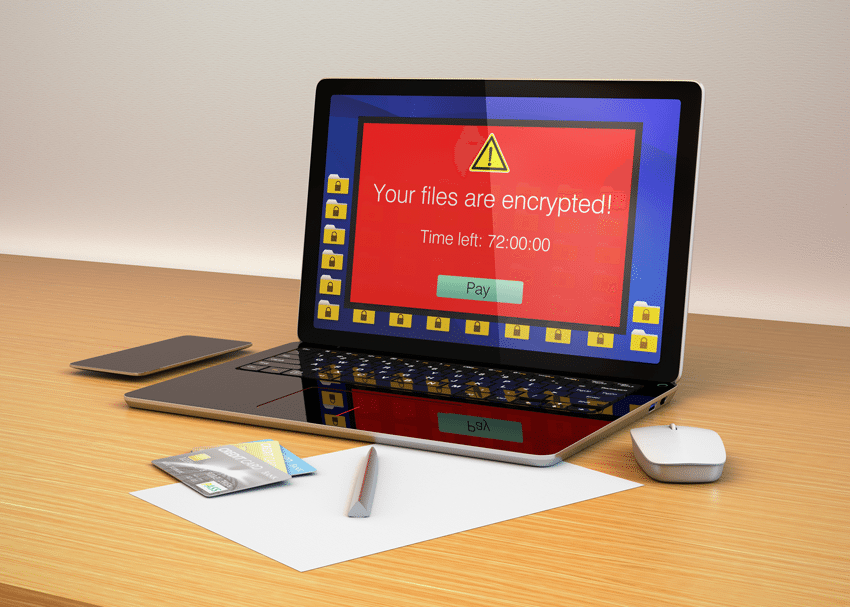
Ransomware, What it Really is & How to Beat it
Ransomware, devastating to your business, online extortion that has reached epic worldwide proportions.
Most of us have heard stories about someone outside our circle of friends or even in our networks that has fallen prey to, the now common, “Ransomware”. We might even know someone who has been affected by it directly. Those of us who know the dangers know the only true way to protect against being victimized by Ransomware. This article will explain what you need to know to protect yourself against Ransomware. Let’s answer a few questions to help our understanding of this infamous malware that is so debilitating.
What exactly is Ransomware?
Ransomware is very simply a malware that, once covertly installed on a victim’s computer, executes tasks that will essentially encrypt your data using a password you don’t immediately have access to. What that looks like is the sudden onset of “something” that has turned your files, data and programs into mumbo jumbo you cannot read nor understand.
There is another, less common type of ransomware called Locker software which is easier to recover but still can provide devastating costs and results.
How do you recover from a Ransomware infection?
Method 1 – Give in to the Ransom Demands
The cryptovirology attack used to lock a victims computer files has encoded everything with a secret password and a demand that payment be made to get access to your files again. The issues with giving in to the ransom demands are many, starting with cost, quickly moving to the threat of relocking and many more scenarios can go through your mind of the potentials given the nature of the access this type of infection brings. Once they are in and have full system access to your data the attackers can essentially install any Trojans, viruses or even reprogram your computer to allow them access any time in the future. That and really, why wouldn’t they attack again now that they know the victim will pay?
In some cases this may be the only recourse as many people are simply reactive to issues such as ransomware, virus infections, and even catastrophic hardware failure and if you don’t plan proactively you are at the mercy of your attacker in the case of Ransomware or breakage in other situations.
Method 2 – Proactively protect your data
The only true way to protect against ransomware is to consistently backup your files in such a way that should disaster strike, you maintain the ability to restore an ENTIRE backup of all your system files and documents on a new and even dissimilar device. Having a full disaster recovery solution is the only, I repeat THE ONLY, true way to protect yourself from this debilitating attack on your data.
As you are basically at the mercy of the ability of your staff to spot a potential infection, Trojan or have ample systems in place to catch the entry on any given machine having an offsite backup solution is crucial. Having a disaster recovery solution is an inexpensive approach that can have you up and running on your computers in just hours after a ransomware infection.
Other ways that can help you protect yourself from Ransomware
On the flip side of things it is important to practice the following when performing day to day duties as they will hopefully help stave off the likelihood of you or your company falling victim to your inefficiencies or even deficiencies of your company’s staff or even yourself.
- Get Educated. Finding out the general rules of thumb when it comes to file sharing, links in emails and other avenues and following a good course of action is important to assisting in preventing accidental infection.
- Get Protected. There is a huge misconception that if you are running anti-virus that you won’t get infected. This is simply not true and Ransomware especially is great at thwarting even the best antivirus solution.
- Don’t count on LUCK to save you. It really isn’t a good defense.
- Don’t think that it “can’t happen to me”, it can and chances are it will.
- Don’t open ANY attachments you are not expecting. Even if it says it’s from your Mom, it might not be. Spoofing is an easy way to send email pretending to be someone else.
- Never open SPAM emails
- Never click links in suspicious emails
- Arm yourself with knowledge and tools. Understanding is the best defense.
Of course these things are going to help but remember, the only defense that will ensure your files are secure is a professional grade offsite backup solution. Period. If you are anything less than protected fully, then consider the value your protection offers.
